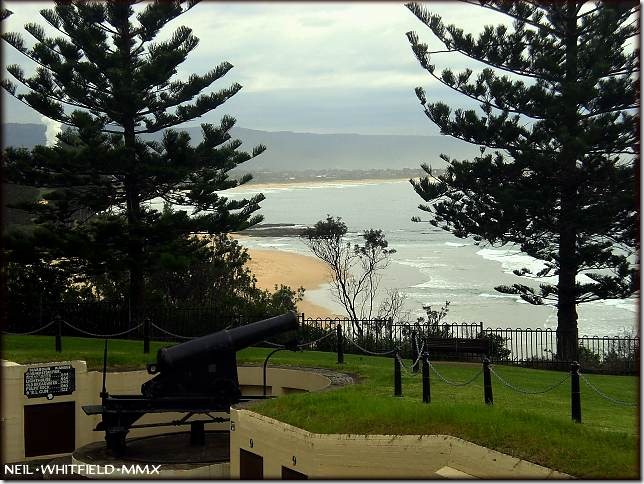Wollongong’s cannons
Posted on October 2, 2010 by Neil


See Smiths Hill Fort at Cliff Road.
Since the end of the Crimean War (1853-1856) there have been at least two scares of the Russians invading Australia. These resulted in Royal Commissions, which urged an upgrading of Wollongong’s port defences. The outcome was that in 1873 the NSW Government received 23 cannons, all 80-pounders, as a gift from the Imperial Government. This was followed in 1879 by three 68-pounder Crimean War relics being relocated from Sydney to Wollongong and placed on Flagstaff Hill. These guns were mounted on wooden bases.
The Royal Navy, in the mid 1880s, and the Legislative Assembly of NSW were of the opinion that enemy ships could demand bunker coal in return for not bombarding the town or invading the country and that the ports of Sydney, Newcastle and Wollongong were prime targets.
Though Wollongong had cannons installed on Flagstaff Hill these, by 1887, had a very short range and were regarded useless. The solution was to build a concealed battery on high ground with underground rooms for supplies, ammunition and shelter with emplacements for two 80-pound cannons on iron carriages.
At the height of the Russian Invasion scare the Government acquired 2½ acres of land along Cliff Road. W Hart of Sydney carried out the construction of Smith’s Hill Fort for an overall cost of £2,000 with work commencing in 1892.
The threat of an invasion had disappeared before the fort was completed in 1893, but the cannons were used extensively for company training under the supervision of Major Henry Osborne MacCabe and maintained by the Wollongong-Bulli Half Company.